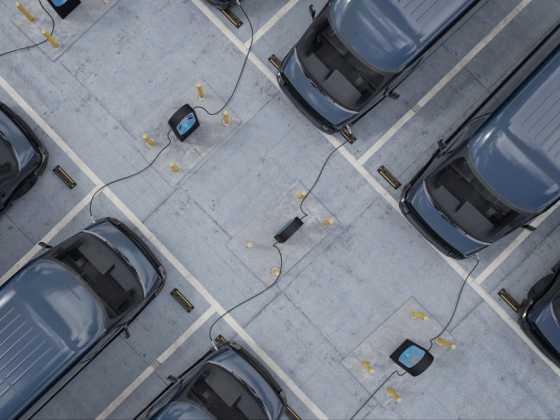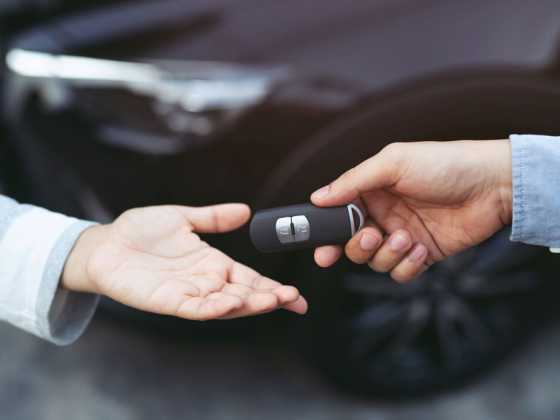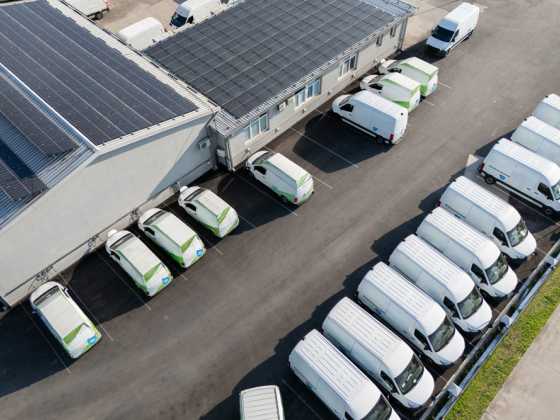Top ten green vehicles to watch out for in 2018

What will 2018 bring the fleet car and van buyer? GreenFleet filters out the top ten low and zero‑emission offerings which should be appearing at a showroom near you in the next 365 days
Renault Pro+ Master Z.E. – Electric Van – CO2: 0g/km

Boosting Renault Pro+’s all-electric commercial vehicle offering to three, the new Master Z.E. was announced at the 2017 Brussels motor show, along with a revised version of the Kangoo Z.E. with a longer 168 miles of range on the official NEDC cycle.
The larger electric van is based on the standard Renault Master, which the French manufacturer states has been designed primarily for last-mile urban deliveries as well as municipal needs. The Master Z.E. uses the same Z.E.33 33kWh battery as the smaller Kangoo Z.E., mated to Renault’s ‘R75’ 57kW electric motor. Range is officially 124 miles on the NEDC cycle, and a full charge from a 7kW wallbox takes around six hours.
The Master Z.E. is available in four versions, with three lengths – 5.04m to 6.19m – and two heights – 2.3m to 2.49m. Load volume hasn’t been compromised by the electric powertrain, and is the same 8m3 to 22m3 as the standard Master. Payload is 1,000 to 1,100kg. A chassis cab version will also be offered, in addition to an expanded range of connected services and a specialist LCV network. A UK on‑sale date has yet to be confirmed.
BMW i3 / i3S – Electric / Range-Extender – CO2: 0-15g/km

BMW’s i3 is refreshed in 2018, and a new more powerful model will also join the range. Both i3 and i3S are powered by the existing lithium-ion 94Ah / 33kWh battery, good for round 180-186 miles of range in the standard car, which BMW states will be around 125 miles in the real world. Exterior styling changes to front and rear bumpers as well as new paint colours enhance the i3’s stand‑out looks, while an updated version of the iDrive operating system for infotainment, communications and navigation functions is standard with an expanded suite of BMW i ConnectedDrive applications.
The standard i3 has 170bhp, while the i3S boasts 184bhp (and 174 miles of range), as well as lowered suspension and a performance-orientated drive system. A range‑extender petrol engine option for both models can also be specified which extends the i3’s overall range in everyday use.
Lexus CT 200h – Hybrid – CO2: 88-94g/km

The hybrid Lexus CT-200h is refreshed and updated for 2018, with styling changes as well as enhanced cabin quality, along with new colours and trim options. A more simple trim-level structure introduced new SE Plus Pack and F Sport Premier Pack models, while Lexus’ Safety System+ system is provided as standard on all SE models and above.
The largest changes to the Japanese hybrid hatchback are cosmetic, while interior upgrades include a 10.3‑inch touchscreen system on selected models: the 134bhp petrol-hybrid drivetrain is unaltered. The updated Lexus CT-200h is on sale now, priced from £23,495 for the entry SE. The top-line CT 200h F Sport Premier Pack is £31,245.
Nissan LEAF – Electric – CO2: 0g/km

The long-awaited successor to the world’s best-selling electric car is now available to order in the UK. The second‑generation Nissan LEAF not only offers more mainstream and premium looks – with more than an evolutionary nod to the trail‑blazing original car – but also a massive 50 per cent increase in range compared to the outgoing model, thanks to a larger capacity 40kWh battery. The official NEDC cycle range is now 235 miles, an 80-mile gain over the first-generation model.
Power is up by 38 per cent to 147hp, and technological advances include the ProPilot semi-autonomous driver assistance system, which can steer, accelerate and brake. The new e-Pedal allows drivers to start, accelerate, decelerate and stop – simply by increasing or decreasing the pressure applied to the accelerator. Prices start at £21,990 (including the government’s £4,500 PiCG discount) for the entry-level Visia, rising to £27,490 for the range-topping Tekna.
Jaguar I-Pace – Electric – CO2: 0g/km

The Jaguar I-Pace will be the third SUV model in the British car maker’s range when it arrives in the summer of 2018. With a production model debut rumoured for a Geneva motor show reveal in March, the all-electric SUV will follow the introduction of the smaller E-Pace earlier in the year.
Long-awaited, the I-Pace heralds a bold new styling era for Jaguar, and looks like nothing the company has produced before. As the I-Pace is still a concept car at the time of publication, we can only go on the prelimary and approximate figures which state that sporty crossover will sprint to 60mph from rest in around 4 seconds, thanks to its front and rear axle-mounted electric motors which produce a combined output of around 400bhp.
The I-Pace will have a range of more than 310 miles (500km on the NEDC cycle) from its 90kWh lithium‑ion battery. An 80 per cent charge can be achieved in just 90 minutes using a 50kW DC charger, while a full charge using the same charger will take around two hours. All-wheel drive will ensure the I-Pace’s 700Nm / 516lb ft is delivered to the road safely, and should also guarantee a sporty drive.
Kia Niro EV – Electric – CO2: 0g/km
The Kia Niro Hybrid SUV was unveiled in 2016 with emissions as low as 88g/km, and late 2017 saw the plug-in Niro PHEV launched with just 29g/km, and an official combined fuel consumption of up to 217.3mpg. At the CES 2018 technology show in Las Vegas, Kia pulled the covers off an all-electric Niro concept.
Part of Kia and Hyundai’s push to launch 31 electrified vehicles by 2020, the Niro EV concept married a 150kW electric motor with a 64kWh lithium-ion battery pack. Kia quotes a normal driving range of 238 miles for the Niro EV concept, with potential to extend that beyond 300 miles. The La Vegas concept also boasted near- bespoke bodywork for improved aerodynamics, low‑drag wheels, as well as a faired-in front grille similar to the Soul EV.
Range Rover / Range Rover Sport P400e – Plug-in Hybrid – CO2: 64g/km

The Range Rover has enjoyed a luxurious image for almost five decades, and the latest models build on this even further, and for 2018 go one step beyond and drive in near silence. The new Range Rover and Range Rover Sport P400e models are the first plug-in hybrids to wear the luxurious SUV’s badge, and offer an official all-electric range of 31 miles from their 13.1kWh batteries. A 2.0-litre 300bhp petrol engine is married to an 85kW electric motor for a total system output of 404bhp.
The Range Rover and Range Rover Sport P400e emit an official 64g/kmand allow drivers to choose from two driving modes: ‘Parallel Hybrid’ lets the driver optimise battery charge or fuel economy, while ‘EV’ mode enables zero-emission running, ideal for urban journeys.
Nissan e-NV200 – Electric Van – CO2: 0g/km

The Nissan e-NV200 was one of the first players in the electric light commercial vehicle market, and the 2018 model year sees a longer-range version unveiled. A larger-capcacity 40kWh battery increases the range by 60 per cent up to 174 miles (NEDC cycle), while no physical size change to the battery itself means the electrically‑powered commercial remains just as practical as before. Nissan states that zero-emission last-mile deliveries are even more achievable than before, thanks to the 2018 e-NV200’s ability to travel an additional 62 miles on a single charge.
Hyundai Nexo – Hydrogen Fuel Cell EV – CO2: 0g/km

Announced at the US CES 2018 technology show, Hyundai unveiled its long-awaited new-generation hydrogen fuel cell EV model, which will replace the aged ix35 FCEV later this year.
The South Korean company stated the Nexo will spearhead its plans to drive forward the development of low emission vehicles, in line with its goal of introducing a total of 18 eco-friendly models to global markets by 2025. The Nexo has an estimated driving range of 500 miles (NEDC) – 134 miles more than its predecessor. Power is now 135kW, and the new car will have cold-start capability within 30 seconds: an industry-leading achievement.
Honda Civic Diesel – Diesel – CO2: 99g/km

A believer that diesel still has its place in the fleet and wider world, Honda will launch a new diesel-engined version of the tenth-generation Civic in March. Claiming to offer ‘an outstanding combination of performance and economy’, the 1.6-litre i-DTEC diesel has significant revisions to its exhaust system to improve real-world performance. A new NOx storage converter system improves NOx emission performance.
Efficiency has improved, too, with provisional official figures of 76.3mpg, and CO2 emissions of just 99g/km for the 117bhp unit. The new engine is also one of the first to be tested through the Real Driving Emissions (RDE) procedure.






